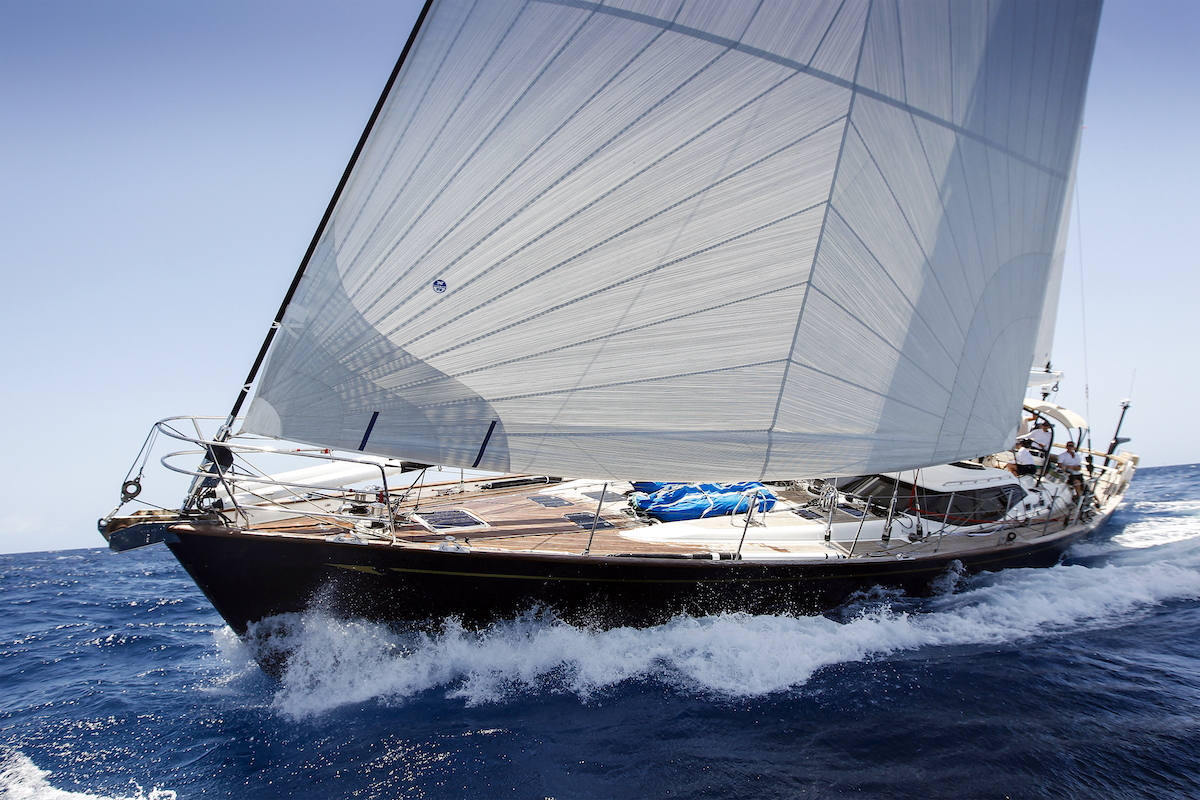People with sailboats use them in many ways, but broadly speaking we define them as either cruising or racing. The proper sails for each of these activities varies widely, but at the level most people engage in cruising and racing, we can simplify the differences between the sails required if we talk about performance, design, and materials.

The Material Difference
The materials used for sails not only vary for cruising and racing, but also depending on the length and weight of the boat and the resulting loads the sails carry. Commonly, jibs and mainsails are made from panels of sailcloth, either Dacron or light laminates with higher-strength fibers. Our company, North Sails, also makes a proprietary type of molded sail called 3Di.
Dacron has been the primary material for paneled jibs and mainsails for more than half a century, with some improvement over that span of time. It remains a common option for many boats, particularly cruising boats.
However, light laminate sails have been developed that carry the loads far better than Dacron or other polyesters, which is a performance bonus to both cruisers and racers. They incorporate ultra-high molecular weight polyethylene fibers; Spectra and Dyneema are examples of this material. These materials dramatically reduce the amount of stretch in the sail and also make the sail much more durable because its sandwich construction using Mylar film provides resistance to chafe. One downside to these light laminates is that they are subject to small amounts of permanent stretch known as “creep,” but they work much better than Dacron because they stretch far less.
For these reasons alone, few racing sails are made of paneled Dacron any more, except for small boats and in racing classes where rules prohibit laminate sails. But the advantages of laminates go well beyond maintaining a designed shape and lasting longer, and as a result, cruising sails are increasingly being made of laminates as well.
Take for example a mainsail for a cruising boat made of 7-ounce Spectra rather than 10-ounce Dacron. The weight savings is significant: a 90-pound Dacron sail might weigh only 55 pounds if made of Spectra. When you consider that the center of gravity for the sail might be 30 feet up, that’s a dramatic reduction in weight. A boat with a Dacron sail will heel and pitch a great deal more. This can have a massive effect on a cruising boat with in-mast furling; even when the sail is reefed, all that weight remains aloft.
Yet there’s more: When your boat heels a few degrees less, you don’t have to reef as early. If you have a Dacron sail up, it will stretch and get deeper under the loads, causing yet more heel. If you have a laminate sail, it will stay much flatter and offer more forward force rather than heeling. The sail designer of a laminate sail understands this dynamic and can design a shape that’s deeper than the Dacron sail, providing more power in lower wind ranges.
One final reason that larger cruising boat owners choose sails with more advanced technology is that many cruising boats don’t have ways to make significant sail and rig adjustments underway, for example changing the tension on outhaul and permanent backstay. Racers have many controls and can bend their masts significantly to flatten or deepen their sails. Most cruising boat sailors have comparatively few such controls at their disposal.
Learn more at: https://www.spinsheet.com/north-sails-resources




